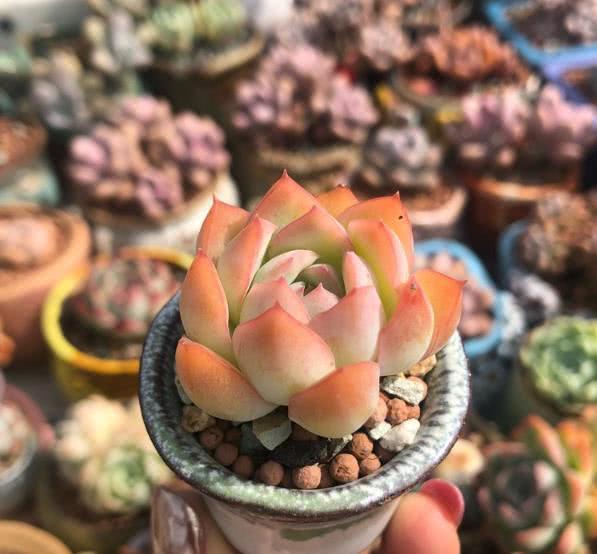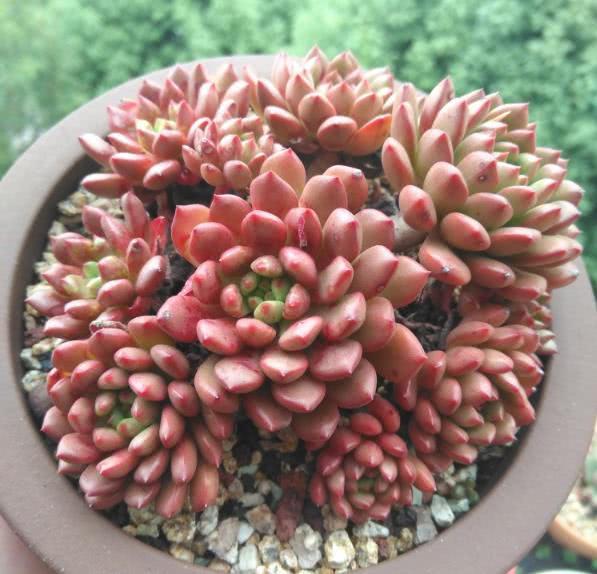How to save the black rot of succulent plants that have been drenched in the rain for several days?

Rain Water has a lot of courage to drench succulent plants for a few days in summer. with high temperature but humidity in summer, succulent plants themselves have to be protected with less water, even if they are exposed to succulent plants to avoid seeing such Rain Water, black rot is to be expected. As for whether the succulent black rot can still be saved, first of all, it depends on the degree of the succulent black rot and the part of the black rot. The mild black rot can still be pulled out to trim the roots and reproduce, while the heavy black rot can only wait for the end of the basin. Summer is the high incidence period of succulent black rot. Succulent black rot is caused by Fusarium oxysporum, which is professionally called Fusarium wilt. The pathogen is Fusarium oxysporum, which is a subphylum fungus, which specifically causes vascular bundle diseases of ornamental plants. The main symptoms are root rot, stem rot, stem base rot, flower rot and so on.
The cause of black rot in succulent plants: black rot caused by parasites. Some insects such as pink scale can also cause black rot / rot, especially root powder. The wounds caused by these pests when they feed on plant juices can cause fungal infections. Black rot caused by exposure to the sun after watering. This is the intuitive cause of most black rot, which often occurs in late spring and summer and autumn. When the temperature is too high, the interior of the cultivated soil becomes a hot pot after watering. Coupled with poor ventilation, the black rot pathogen will take advantage of the situation. Trauma can also cause black rot in succulent plants. The trauma caused by moving the basin or picking leaves is not well, and the dampness causes the black rot fungus to breed, resulting in black rot.
Black rot is acute and occurs very quickly, either the stalk is black and the leaves fall all over the place (typically the succulent plant white peony), or the whole plant dies, so it is too late to insert leaves, so when you find the black rot in succulent plants, you should deal with it immediately, and you must not hesitate to cut off the head with a knife. Once the succulent plant is black rot, we should start to check the humidity of the basin soil. If it is found just after watering, pull it out immediately and seriously behead it. Otherwise, the Fusarium will reach the succulent body as you pour water in the next few hours. By that time, it will be too late and the whole plant will be dead.
After it is found that the succulent black rot is rotten, remove the black rot as soon as possible, then dry the wound in a ventilated and non-direct sunlight place after applying carbendazim, and then insert the leaf into the leaf, which should be planted. Leaf cuttings should choose leaves that are not infected by pathogens, and should be separated from other succulent leaves to prevent and cure leaves with black rot and become more infected. Colonization must be disinfected. In addition, succulent plants that are relatively close to black rot should also be disinfected to prevent the spread of black rot. It should be noted that before and after resection, hands should be washed and disinfected, knives and scissors should also be sterilized to put an end to infection.
What about succulent black rot? What do you want to put on after beheading? Black rot must be beheaded to the position where the stem is not infected, otherwise it will continue to spread upward, after beheading, apply some carbendazim in the cut, there is no tobacco ash, dry for two days before cutting. If the succulent pole is already half black, the reason for the black rot is that the temperature drops suddenly, the leaves become water, and the leaves are not treated in time, and the water leaves are infected with the pole, causing the pole to melt water, so when you see the leaves turn water, you need to clean it up from the growing point in time. Don't take any chances.
It is best not to rashly pour carbendazim solution to try to cure black rot, when water absorption can only cause black rot to spread more quickly. Carbendazim root irrigation is generally used to treat fungal infections on the leaves, after the black rot has occurred, the cure effect is not good, at this time to dig out to check the roots and beheading is the right thing to do. When succulent plants are suspected of black rot such as losing their leaves and irrationally dissolving water, if the basin soil is in a fully dry state, you can continue to observe. If the basin soil is wet, it should be dug out decisively to cut off the transfer of water from the roots and prevent the black rot from spreading.
Here is a gathering place for succulent plant lovers, sharing succulent maintenance skills, welcome to follow and exchange.
- Prev

Succulent plants grow slowly and choose to change pots to grow well and take root quickly.
Succulent growth becomes slow or stops growing, there are roots protruding from the vents at the bottom of the basin, when loosening the soil, the roots of flowers have obviously hindered the loosening tools, and watering will dry quickly, these signs indicate that the flowerpot is too small to affect.
- Next

Does the black rot root of succulent plants have something to do with the soil? Do a good job of maintenance at ordinary times
When pests are rampant in the soil, the roots may also be completely destroyed, which can lead to the decay of succulent plants over time. Excessive fertilization or mixed with immature organic matter after application will also lead to plant rot.
Related
- Wuhan Hospital Iron Tree Blooming Result Was Instantly Frightened by the Gardener Master
- Which variety of camellia is the most fragrant and best? Which one do you like best?
- What is the small blue coat, the breeding methods and matters needing attention of the succulent plant
- Dormancy time and maintenance management of succulent plants during dormancy
- Minas succulent how to raise, Minas succulent plant pictures
- What are the varieties of winter succulent plants
- How to raise succulent plants in twelve rolls? let's take a look at some experience of breeding twelve rolls.
- Attention should be paid to water control for succulent plants during dormant period (winter and summer)
- Watering experience of twelve rolls of succulent plants
- Techniques for fertilizing succulent plants. An article will let you know how to fertilize succulent plants.

